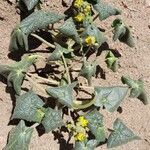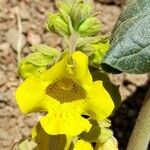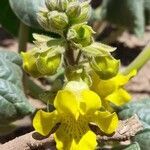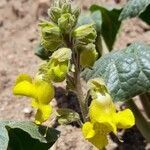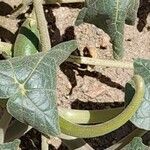Erect to prostrate herb, up to 500 mm tall. Leaves reniform, 5-nerved, glandular-pubescent. Inflorescence a dense, terminal raceme. Fruit a cylindric-ovoid, woody capsule with slender curved beak, longer than spiny body. Flowers greenish yellow outside, deeper yellow to orange inside, sometimes red-blotched.
A herb. It grows each year from seed. It grows 30-70 cm tall. It has short hairs and a sticky resin. The leaves are opposite and simple. They are round to kidney shaped and have teeth along the edge. It has yellow flowers. The seed pods have double claws.
